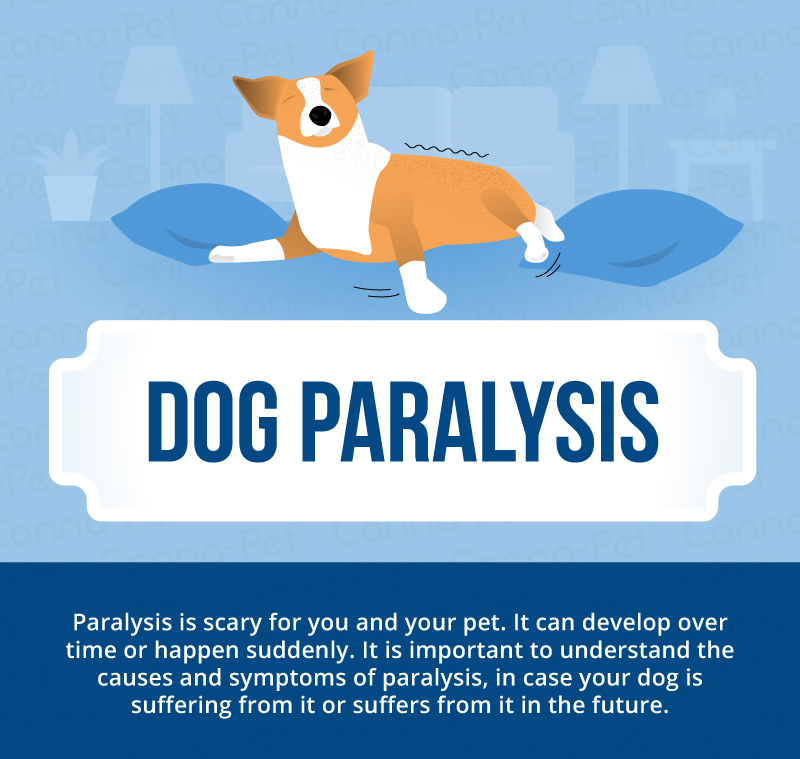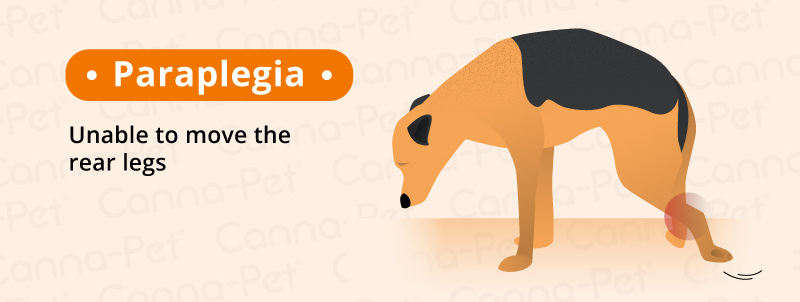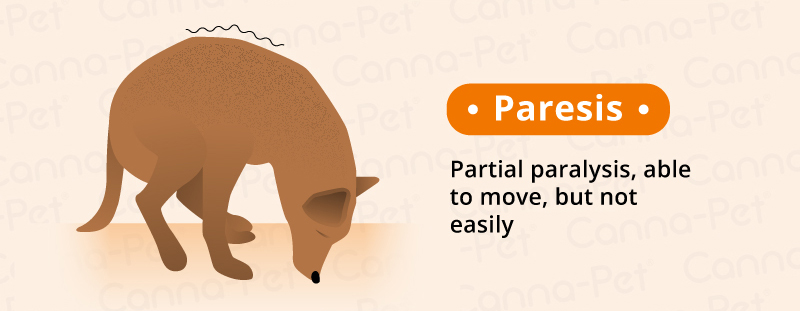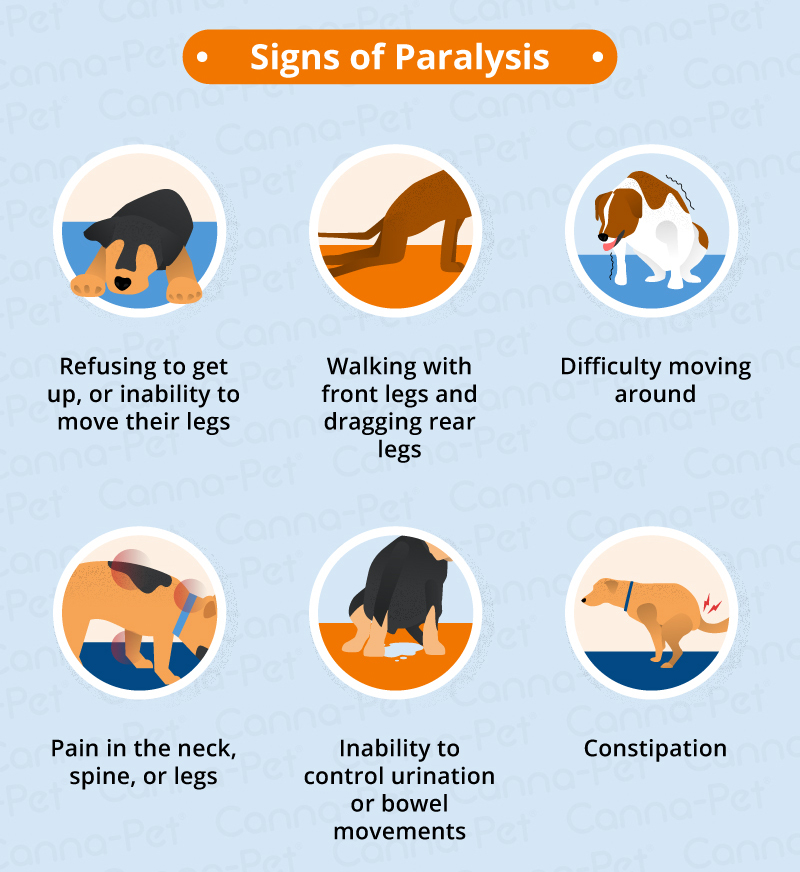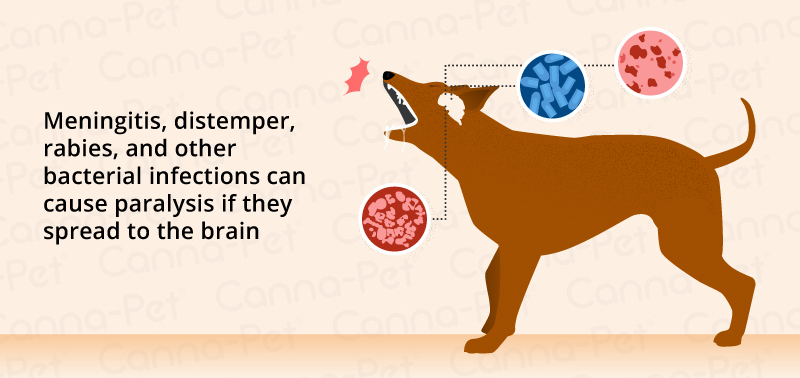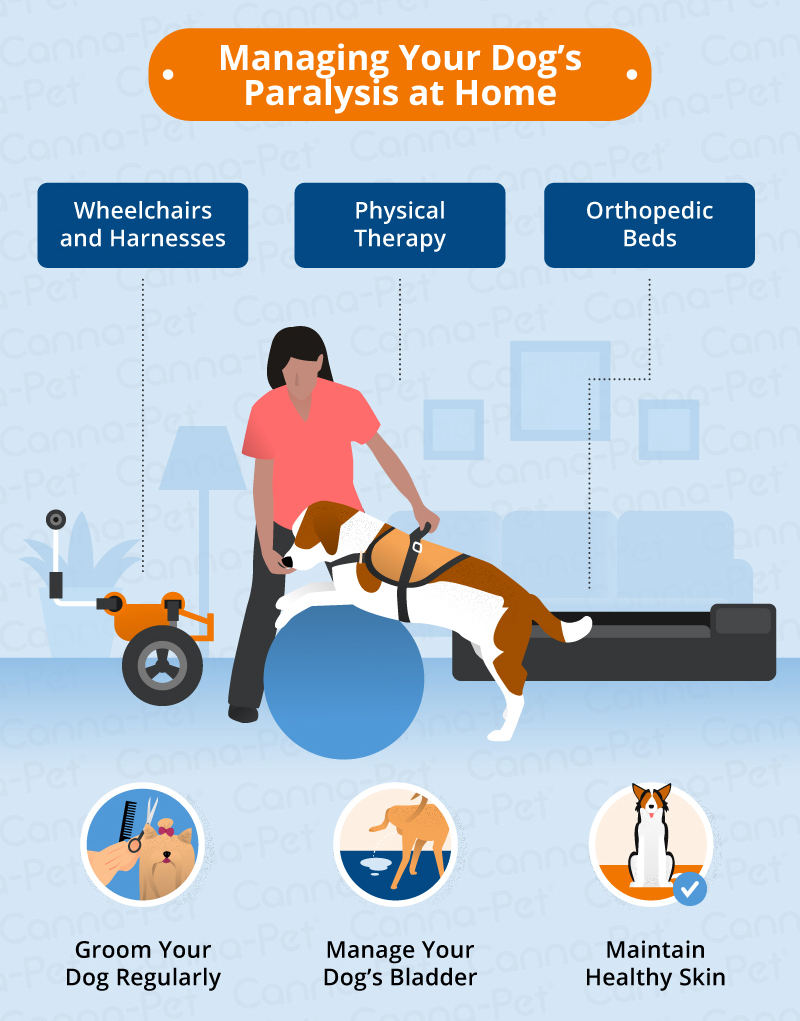As a pet owner, paralysis is perhaps the scariest thing that can happen to your dog. A loss of mobility could mean the end for your furry friend, but it doesn’t necessarily have to. There is plenty you can do to care for your dog if he should suffer from partial or full paralysis.
There are different types of canine paralysis. Some cases can be sudden, while others can develop over time. Read below to learn what steps you can take if your dog ever suffers from paralysis as well as some preventative measures to ensure that your furry friend never has to experience this debilitating condition.
What are the signs and types of paralysis in dogs?
Paralysis in dogs is caused when communication between the spinal cord and brain has been disrupted. Sometimes the dog will not be able to move at all and have total paralysis, while other times your dog may only appear weak, or have difficulty moving.
The three types of canine paralysis are:
- Tetraplegia – Unable to move all four legs
- Paraplegia – Unable to move the rear legs
- Paresis – Partial paralysis, able to move, but uneasily
Symptoms of paralysis in dogs can range from obvious signs to subtler cues, depending on the location of the trauma. However, there are several things you can look out for:
- Refusing to get up, or inability to move any of his legs
- Walking with front legs while dragging his rear legs
- Difficulty moving around
- Pain in the neck, spine, or legs
- Inability to control urination or bowel movements
- Constipation
Causes of Paralysis in Dogs
If your dog was hit by a car or recently suffered from another traumatic event, the cause of your dog’s paralysis is obvious. However, sometimes symptoms may appear suddenly, seemingly out of nowhere. Identifying the cause of canine paralysis can help your veterinarian make a proper diagnosis and outline the best course of treatment to help your pup potentially regain mobility.
There are several common underlying conditions and environmental causes that can lead to dog paralysis, including:
Tick Bites
Surprisingly, the leading cause of paralysis in dogs is tick bites.
Certain species of ticks can inject a neurotoxin into your dog’s bloodstream when they bite. This toxin can cause a sudden neuron paralysis, which in some cases, may result in sudden paralysis. When this happens, you need to address the issue as quickly as possible. If left untreated, the paralysis will spread and can even become fatal. Tick paralysis is most often caused by multiple ticks, but sometimes it only takes one tick to cause paralysis.
Common signs that your dog was bitten by a tick include a loss of coordination and vomiting. Some dogs may even have changes in the tone and quality of their bark. The symptoms will usually begin to appear six to nine days after the tick has attached to the skin of the dog.
Luckily, tick bite paralysis can be easily treated with medication.
Congenital Diseases
There are several conditions in dogs that can leave them more predisposed to developing paralysis.
Chief among them is Intervertebral Disc Disease (IVDD). IVDD mainly affects chondrodystrophic breeds, or dogs with abnormally short legs, like Dachshunds. IVDD is a condition that occurs when the cushioning intervertebral discs between the vertebrae of the spinal column become ruptured or burst (herniate) into the spinal cord space. When this happens, the discs press on the nerves that run through the spinal cord, which can cause paralysis.
Another common cause of dog paralysis is Degenerative Myelopathy (DM). This genetic disease attacks the nerves in the spines of older dogs, and is a slow acting, progressive disorder that eventually leads to paralysis of the hind legs. Breeds affected by this disease include the Welsh Corgi, Boxer, German Shepherd, Chesapeake Bay Retriever, and Irish Setter.
Larger dogs are also susceptible to a disorder called Fibrocartilaginous Embolism. This occurs when a small portion of a spinal disc breaks off of your dog’s spinal column and blocks blood flow to a portion of his body. This can result in a painless and typically temporary paralysis that will typically resolve itself within a couple of weeks.
Accidents and Trauma
Paralysis caused by accidents or trauma usually results in permanent damage. The trauma can be due to an accident, or from shock. In cases where there is no injury to the motor area, the paralysis will generally be temporary.
Bacterial Infections
There are several infections which can lead to paralysis if they spread to the brain. These include meningitis, distemper, and rabies among others.
Infections often arise from outside contact with wild animals or if your dog ingests a harmful non-food item. The cause will depend on the symptoms, like fever, vomiting, and diarrhea. Your veterinarian will conduct tests to find the specific infection.
Distemper and rabies affect your dog by delivering viruses to the brain, which can lead to paralysis. This is why the rabies vaccination is required by law for dogs. Infections to your dog’s face and ears, when not treated early or effectively, can also lead to paralysis if they spread.
Malignant Tumors
The development of a tumor in your dog’s spine can also cause paralysis. These tumors are generally malignant, and can have a life-threatening impact. These tumors can affect your dog’s nervous system as long as they remain in the body. Spinal tumors can affect your dog’s limbs, which can in turn cause paralysis.
Tumors will often cause paralysis at a slower rate than tick bites, resulting in more gradual symptoms rather than sudden paralysis.
How is paralysis in dogs diagnosed?
Together with your veterinarian, you will go over a thorough history of your dog’s health, the onset of symptoms, and incidents that may have led to your dog’s condition. In incidents of trauma, like being hit by a car, the cause is obvious, while others can be more deeply rooted issues. Your vet will examine your dog, document his movements, and analyze how he responds to reflex tests, as well as his ability to feel pain in all four legs. Your vet will also check the head, spine, and legs for signs of pain and sensitivity.
This will help your vet determine the source of the problem. Lab tests will be conducted to check for additional infection, and X-rays will check for irregularities with the vertebrae. A special X-ray called a myelogram may be conducted to view the spinal cord. CT scans, MRIs, and biopsies may also be conducted.
What are the treatment options for dog paralysis?
Dog paralysis is not only frustrating for the pet, but for the owner as well. Though you may initially think your dog’s life is over, there are several treatments and assistive devices that will help your dog perform daily activities and in many cases, regain mobility.
Your dog’s treatment options will depend on the cause of his paralysis. Once your veterinarian diagnoses the cause, and analyzes the severity, he will put together a treatment plan. This can include medication, surgery, and physical therapy.
Dogs with paralysis caused by infection will be given a course of medication and possibly surgery. Anti-inflammatories are prescribed to calm swollen nerves, while IVDD is often treated surgically. Likewise, tumors or blockages of blood flow can be repaired surgically, depending on the location. Catheters may be needed to help your dog dog empty its bladder.
Hydrotherapy is sometimes used for postoperative dogs who can’t yet stand normally. This exercises inactive muscles through water pressure. Other therapies include cold and heat therapy to relax your dog and reduce pain, laser removal of skin lesions, magnetic therapy for muscle relaxation, and electrical stimulation to increase blood flow and stimulate muscles and nerves, and massages.
Some dogs will recover quickly after treatment, while others may need to stay in the hospital for a period of time to be monitored, or until he is able to walk. Other times your vet will send you home with your dog with a specific recovery plan. This plan comes with checkpoints so you can adjust as your dog improves.
How can I manage my dog’s paralysis at home?
Dogs can often survive canine paralysis with proper care. Paralysis is usually sudden and nearly impossible to predict, but with the help of your vet, you will often be able to find the cause. Then, your veterinarian will help you make a home care plan.
If your dog does become paralyzed, it doesn’t mean their life is over. Paralyzed dogs can live happy lives thanks to the dedication of you, their owner. It is a big commitment that takes patience and keen observation, but could be well worth it to you to help extend the life of your pet. Here are a few things you can do to improve your paralyzed dog’s quality of life.
Wheelchairs and Harnesses
There are many wheelchairs or carts designed for dogs with medical issues like paralysis. Many dedicated owners also rig up their own at home. Dogs will often adapt very well to a wheelchair and get used to getting around with one. Wheelchairs are mainly used for dogs with paralysis to their hind legs, but with strong front legs.
Harnesses can also be useful to help your dog get around and even continue to go for walks. These special harnesses allow you to lift your dog’s hind quarters while they walk with their front legs. Improper usage could cause further harm to your dog, so make sure to consult with your vet before using one.
Orthopedic Beds
Invest in an orthopedic bed for your dog to cushion his pressure points and prevent them from forming ulcers. Make sure the bed and liner are both washable and wash them regularly.
Groom Your Dog Regularly
Paralyzed dogs are often unable to adequately groom themselves, so some of that duty will be up to you. Keep up with their hygiene to help keep them healthy and happy.
Bathe your dog every few days with a moisturizing shampoo to avoid dying your dog out. Dry pet shampoo may also be useful for spot cleaning between washes. Baby wipes also are great for cleaning fur and keeping your dog’s skin moist.
Manage Your Dog’s Bladder
Many paralyzed dogs cannot urinate on their own. A little bit of urine in your dog’s bedding may be a sign that his bladder is full. If your dog’s bladder is not regularly emptied, it can lead to other infections. If your dog is unable to urinate on his own, your veterinarian can teach you how to help empty his bladder. There are also diapers available for dogs to avoid messes.
If your dog does experience leakage, make sure to wipe away any urine immediately, as it can burn your dog’s skin.
Maintain Healthy Skin
Paralyzed dogs require a lot of help in maintaining a healthy skin and coat. They often can’t feel it if their skin is rubbing of chafing, and sores can appear in vulnerable areas like elbows, hips, and ankles. If sores develop, permanent bandaging or padding may be needed.
Physical Therapy
Exercise is difficult for paralyzed dogs, but there are still things you can do to maintain your dog’s flexibility and muscle tone. There are range of motion exercises that will be beneficial to some dogs. Dog massages can also help improve blood circulation and soothe sore muscles and joints. Your veterinarian can teach you how to do both.
While caring for a paralyzed dog is a big job, it can come with many rewards. Proper care is essential to extend your dog’s life, so be sure to follow your veterinarian’s treatment plan, and enjoy the extended time with your dog.
Sources:
- “Paralysis in Dogs.” PetMD, www.petmd.com/dog/conditions/neurological/c_dg_paralysis.
- Schubert, Thomas. “Leg Paralysis in Dogs – Dog Owners.” Merck Veterinary Manual, www.merckvetmanual.com/dog-owners/brain,-spinal-cord,-and-nerve-disorders-of-dogs/leg-paralysis-in-dogs.
- “Causes of Sudden Dog Paralysis.” VetInfo, www.vetinfo.com/causes-sudden-dog-paralysis.html.
- Clark, Mike. “Paralysis In Dogs: Symptoms, Causes, & Treatments.” Dogtime, 19 Feb. 2018, dogtime.com/dog-health/58217-paralysis-dogs-symptoms-causes-treatments.
- Allen, Meredith. “How To Care For A Paralyzed Dog.” PetCareRx, 7 July 2018, www.petcarerx.com/article/how-to-care-for-a-paralyzed-dog/2841.


